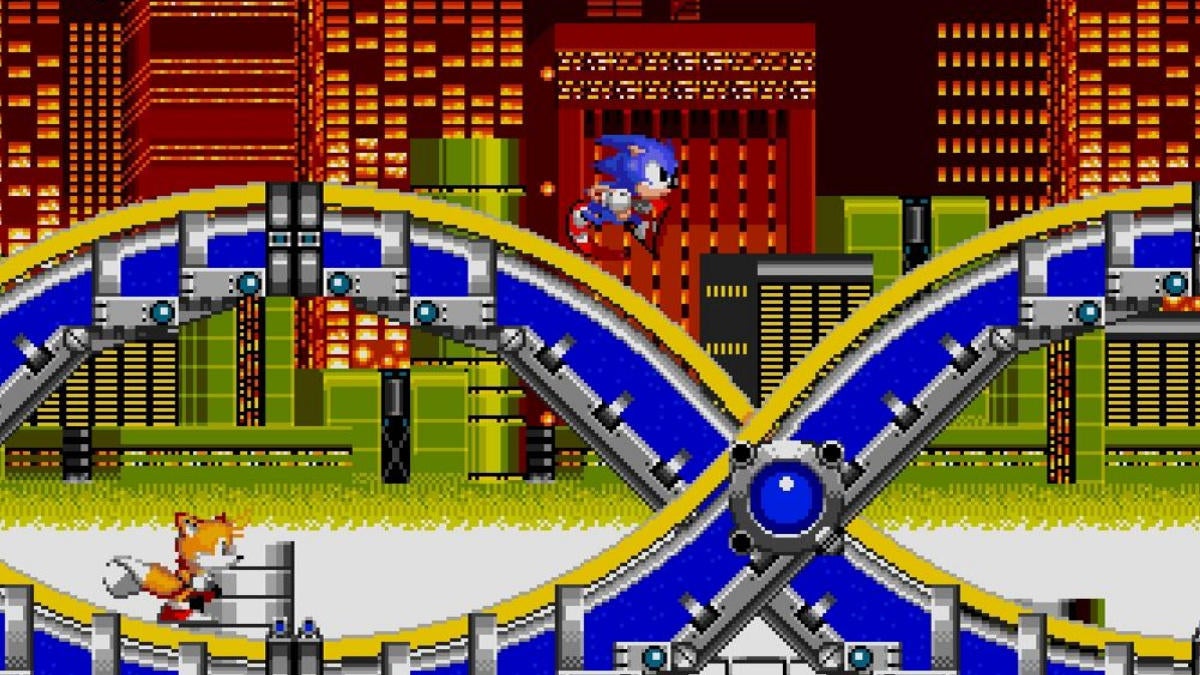Has the Sonic the Hedgehog Franchise Abandoned Its Environmental Themes?
In the 1990s, environmentalism became a key theme in a lot of media aimed at kids. In the '80s, Ghostbusters gave us Walter Peck, an out-of-control agent of the Environmental Protection Agency portraying environmentalists in a fairly negative light. However, the course of pop culture greatly shifted just a few years later. Franchises like Captain Planet, the Teenage Mutant Ninja Turtles, and even G.I. Joe began espousing the virtues of protecting our Earth. The first Sonic the Hedgehog video game was very much a product of that era releasing on Sega Genesis in 1991. The game pit its hero hedgehog against the villainous Dr. Robotnik's unchecked industrial vision. There was a clear message in those early games, and in Sonic media, but these days, those themes have all but disappeared.
The earliest Sonic games featured basic themes of industrial vs. environmental. While those games were light on actual story, developer Sonic Team was able to convey that theme in ways that were simple to understand for even young players. Dr. Robotnik's machines held animals captive, and destroying them allowed those animals to roam free again. The theme extended to the levels, as well. Areas like Sonic 2's Chemical Planet Zone gave players a glimpse at the cold and sterile vision of Robotnik, in stark contrast to places like Green Hill Zone. In 1993's Sonic CD, each of the game's stages feature variations set in the past, present, and future. As a result, players get a full glimpse at the negative impact of Robotnik's plans. Stages in the past are green and bright, but the present and future make Chemical Plant seem cheerful by comparison. Sonic CD doesn't contain animals in its robots, but destroying the machines results in flowers being planted in their place.

In recent years, that's changed, and the greatest example of this disappearance can be seen in the two Sonic movies. While the films have done an excellent job capturing key elements of the Sonic canon, the environmental messaging has totally vanished. Dr. Robotnik's villainy has now been left ambiguous. We know that Jim Carrey's take on the character wants power and that he's willing to kill Sonic (or anyone else) to get it. But the actual impact of the doctor's plans hasn't been felt.
In the first Sonic the Hedgehog movie, Dr. Robotnik is introduced as a zany scientist, and the majority of his appearances in the film are centered on establishing his conflict with Sonic. That makes sense for an origin movie, but the sequel misses an opportunity to bring in the themes from the games. In Sonic the Hedgehog 2, Robotnik's plans lead to heavy destruction in Green Hills. We see a lot of wooded area destroyed, but there's no immediate impact shown for the wildlife. We also never get a glimpse at the villain's vision or what his industrial goals would do to the planet.

This lessened concern over the environment can also be seen in moves made by Sega; last year, the company saw heavy condemnation from Sonic fans when it announced plans to release Sonic NFTs. The company subsequently canceled those plans, but many fans were disappointed to see an environmental icon like Sonic used to promote something that's been proven harmful to the planet. Environmental themes are still present in some modern Sonic games, but it seems far less prevalent than in the early days.
Unfortunately, Sonic isn't the only one that has forgotten about the importance of environmentalism. These days, the TMNT are more concerned with stopping Shredder, Captain Planet has disappeared, and G.I. Joe's Eco-Warriors are regarded as a part of the franchise best left forgotten. Environmentalism is no longer looked at as a universal good for our society. Instead, it's become yet another culture war, despite the fact that global warming is a far bigger concern now than it was back in 1991. Sonic has become the hero we need when his cultural impact is greater than ever before. When Sonic Origins release in June, newcomers will get to see how these older games highlighted environmental issues. This year's Sonic Frontiers similarly offers a chance to see environmental themes made prevalent again, particularly with the forests and fields Sega has showcased from the game thus far. Hopefully these two games will result in that positive messaging shining through once again.
Do you think Sonic's environmental themes need greater focus? Do you think the movies should do a better job showing Robotnik's villainy? Let us know in the comments or share your thoughts directly on Twitter at @Marcdachamp to talk all things gaming!